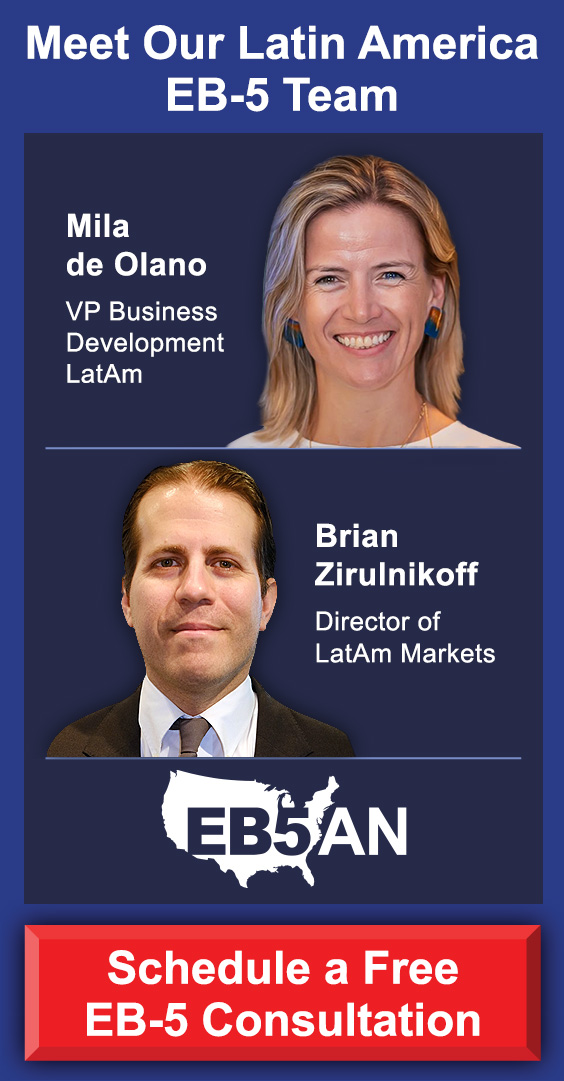Those who are familiar with the EB-5 Immigrant Investor Program know that investing in a rural project can speed up the Green Card approval process. EB-5 investors who have invested in such projects have enjoyed priority processing of their Form I-526E immigration petitions.
Thanks to recent data obtained through FOIA requests, we now have even more proof of the major advantages that come with rural project investments. If you’re a prospective EB-5 investor, you should strongly consider making this kind of investment for a speedy pathway to U.S. lawful permanent resident status.
In this article, we’ll explain what you need to know about investing in EB-5 rural projects and where to go for help in obtaining an EB-5 Green Card.
How Does Rural Priority Processing Fit Into the EB-5 Process?
- Overview of the EB-5 Application Process
- Your Immigrant Petition Reflects Your Investment Choice
- What Are Set-Aside Visa Categories?
Rural Petitions Are Adjudicated Faster Than Urban Petitions
Invest in a Rural TEA Category Project With EB5AN
How Does Rural Priority Processing Fit Into the EB-5 Process?
Overview of the EB-5 Application Process
Submitting a Form I-526E immigrant petition to USCIS is a crucial part of the EB-5 application process. You cannot get an EB-5 Green Card without an approved immigrant petition. Key steps of the process include the following:
- Confirm visa availability.
- Start the EB-5 investment process.
- File Form I-526 or I-526E, then either I-485 or DS-260 to obtain a conditional two-year Green Card.
- Keep your invested capital allocated to the project (“at risk”) for at least two years.
- Submit Form I-829 during the last three months of the two-year conditional period to remove conditions on lawful permanent residency.
The approval process is often faster and smoother for those who work with established regional centers and choose projects in the right set-aside visa categories.
Your Immigrant Petition Reflects Your Investment Choice
To be approved for an EB-5 Green Card, you must first have an approved immigration petition. You can choose between two types.
The first option is Form I-526, Immigrant Petition by Standalone Investor. Very few EB-5 investors file this one. Form I-526 is connected to a direct investment in a U.S. business called a new commercial enterprise. This type of investment comes with a much heavier workload from the investor, less professional support, and harder job creation requirements. Only direct jobs are counted; direct jobs establish an unmistakable employer-employee relationship between the U.S. business and those it employs.
The second option is Form I-526E, Immigrant Petition by Regional Center Investor. Almost all EB-5 investors file this one. Form I-526E is connected to a regional center investment. Regional center investments require less of a time commitment from the investor, provide help from a regional center that has been approved by United States Citizenship and Immigration Services (USCIS), and have easier job creation requirements. Both direct jobs and indirect jobs (which occur when projects indirectly create jobs elsewhere because of their economic activity) are counted.
What Are Set-Aside Visa Categories?
Foreign investors can boost their odds of getting an EB-5 Green Card quickly by pursuing immigrant visa set asides. These are also known as reserved visas.
The EB-5 Reform and Integrity Act of 2022 (RIA) created three set-aside visa categories to encourage investors to support targeted employment areas (TEAs) in need of economic stimulus and job growth.
The first category is rural TEA projects. A rural TEA is outside a metropolitan statistical area and beyond the outer boundary of a city or town with a population of 20,000 or more, based on the most recent decennial census.
The second category is high-unemployment TEA projects, determined by looking at the labor force employment measure for a given census tract where the commercial enterprise does business. To be eligible, the unemployment rate of the specified area must be at least 150% of the U.S. national average unemployment rate. Directly adjacent census tracts can be included in the high unemployment area too, if the weighted average unemployment for the total area is at least 150% of the national unemployment average.
The third category covers certain designated public infrastructure projects.
Because of the RIA, EB-5 visas are now allocated among set aside categories each fiscal year as follows:
- Rural TEAs: 20%
- High-Unemployment TEAs: 10%
- Public Infrastructure Projects: 2%
Unused set-aside visas are retained in the same category for one more fiscal year. Any that remain at the end of the second fiscal year are reallocated to the unreserved visa pool.
Investing in a new commercial enterprise located in a rural area is one way to avoid visa backlogs commonly experienced by investors from high-demand visa countries, like China and India. USCIS restricts the number of visas it issues annually under each EB-5 category. Because of country caps on EB-5 visas, no country may receive more than 7% of the total number of such visas each year.
Investors from such countries who choose projects in rural areas will have a significant advantage in obtaining immigrant visas over other applicants from those countries.
Rural Petitions Are Adjudicated Faster Than Urban Petitions
Your odds of getting your immigrant petition approved quickly are much better with a rural category investment than an urban category investment.
The American Immigrant Investors Alliance and The Galati Law Firm recently filed a Freedom of Information Act request, and the findings that came back were striking. During the past few years, USCIS approved about 97% of both rural and urban TEA I-526Es, but processed far more of the petitions for rural TEAs.
Between April 1, 2022 and January 31, 2025, USCIS received 9,878 I-526E petitions. Out of this total, 53% were for urban projects. 44% were for rural projects. Even so, USCIS approved three times as many of the rural applications.
And the disparity has grown over time. Between February 2023 and May 2025, USCIS adjudicated 74 urban project petitions. However, it adjudicated 967 rural petitions. USCIS processed 13 times as many rural petitions as urban petitions, despite the fact that there were more urban petitions filed during that time frame.
Processing times for rural petitions have been speedy, with nearly all recent rural TEA applications approved in less than a year.
The adjudication statistics and visa numbers are clear. There continue to be more rural visas available than there are applicants for them. Because of rural priority processing, USCIS adjudicates rural I-526Es more quickly than I-526Es filed under the urban high unemployment category.
Time Your Application Using the Visa Bulletin
EB-5 investors should keep an eye on the State Department’s Visa Bulletin to track priority dates and final action dates. The priority date is when USCIS receives an EB-5 investor’s Form I-526/I-526E. Think of that date as a place in line for an EB-5 visa. The final action date shows when visas are available for an immigration category and country. It’s a cutoff date for issuing visas.
If the Visa Bulletin shows that your priority date is earlier than the final action date, a visa is available. If the Visa Bulletin shows your priority date is later than the final action date, you have to wait.
Before choosing an EB-5 project to invest in, you may wish to consider other issues. These include the anticipated repayment of your investment, project location, and risk level. However, if getting a Green Card quickly is your primary goal, then a rural TEA project is likely to be your best option.
Invest in a Rural TEA Category Project With EB5AN
In return for making a qualifying investment in a U.S. business that will create full time positions for American workers, a foreign national and their eligible family members can enjoy the many benefits associated with an EB-5 Green Card.
With so much at stake, you’ll want the right team of professionals by your side.
EB5AN offers high quality, desirable EB-5 projects. Our development partners are experienced and professional. We offer exemplar projects fully funded by senior loans, which means low financial risk for potential investors. With construction and job creation already underway by the time of investment in most cases, EB5AN clients should have no trouble fulfilling the program’s job creation requirements. We also offer an I-526E approval refund and job creation guaranty.
EB5AN has helped more than 2,700 families from 70+ countries relocate to the United States as lawful permanent residents. Our expert team has more than a decade of experience, and offers clients first-rate, low-risk EB-5 regional center projects with 100% USCIS project approval rate to date.
To learn more about the EB-5 Immigrant Investor Program, book a free call with us today.










